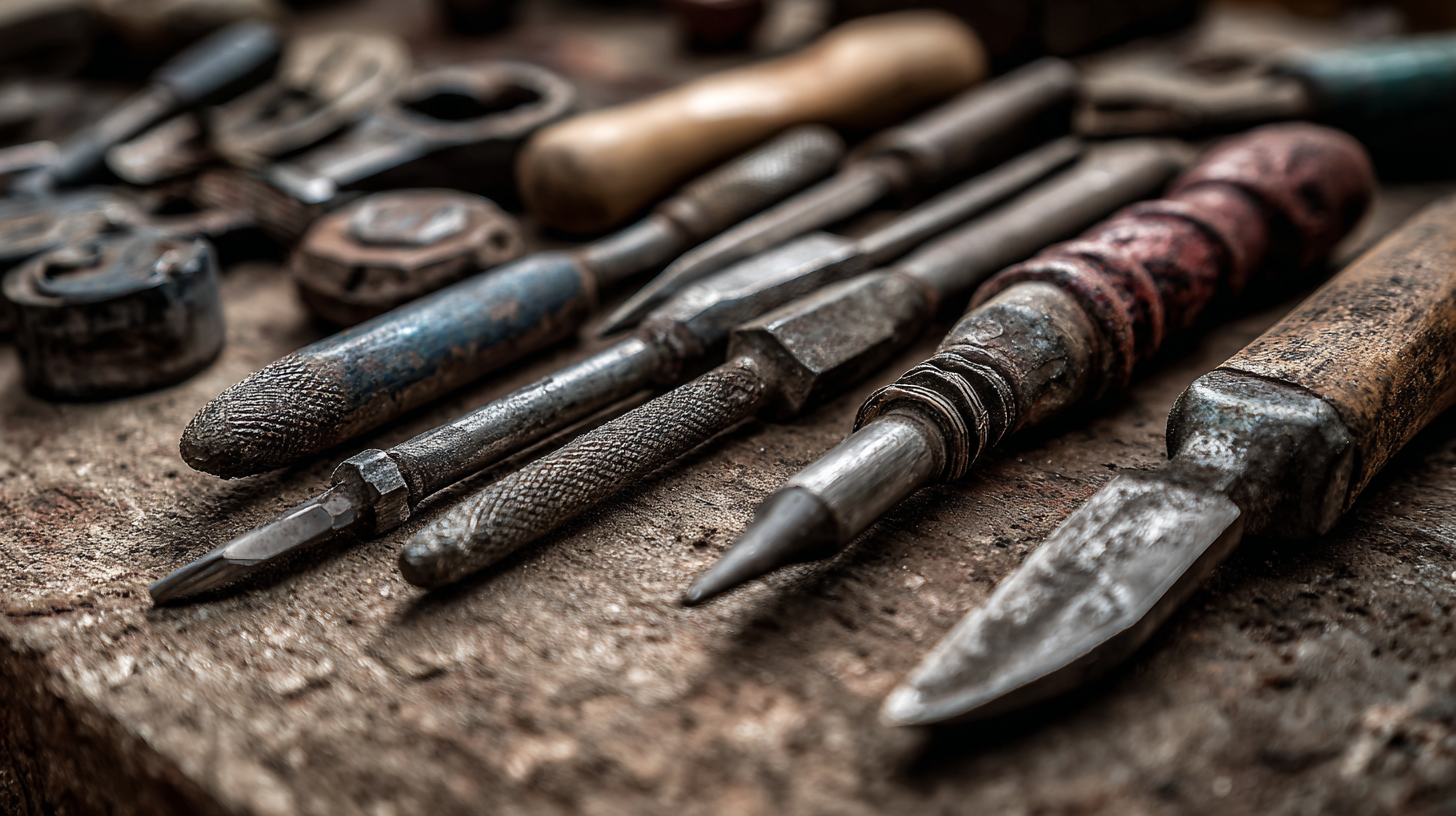Blog
Unlocking Efficiency with Best Steel Tools for Global Procurement Success
In today's competitive global market, the procurement of high-quality steel tools is pivotal for enhancing operational efficiency and reducing costs. According to a report by Mordor Intelligence, the global industrial tools market is anticipated to reach $113 billion by 2026, driven by advancements in manufacturing processes and an increasing demand for durable and reliable materials like steel. The significance of after-sales service in this sector cannot be overstated, as effective support not only prolongs the life of steel tools but also minimizes maintenance expenses. Furthermore, the future landscape of steel tools is shifting towards innovations such as smart technology integration, which can optimize performance and provide real-time data for proactive maintenance. By strategically investing in the best steel tools and focusing on superior after-sales support, businesses can unlock unprecedented procurement success and gain a competitive edge in their respective industries.

Identifying Key Steel Tools for Effective Global Procurement Strategies
In the evolving landscape of global procurement, the effective integration of advanced tools is crucial to achieving efficiency and cost-effectiveness. A key focus for procurement professionals lies in leveraging data-driven purchasing strategies. By employing machine learning (ML) methods, companies can develop robust price prediction models specifically tailored to automotive steel materials. These models offer insights that aid in strategic decision-making, allowing organizations to optimize their procurement processes and enhance overall performance.
Moreover, the rise of generative AI platforms presents a transformative opportunity for procurement teams. These platforms utilize AI and ML techniques to analyze vast amounts of procurement-related data, generating actionable insights that can improve sourcing strategies. As organizations centralize their procurement operations, they can better manage resources and streamline processes, ultimately driving efficiency and value across the supply chain. Embracing these key steel tools and technologies can empower procurement leaders to navigate challenges while pursuing growth in a competitive global market.
Evaluating the Impact of Steel Tool Quality on Supply Chain Efficiency
In today's global marketplace, the quality of steel tools plays a critical role in enhancing supply chain efficiency. High-quality tools not only improve productivity but also reduce downtime, contributing to an overall smoother operational flow. Companies that prioritize the procurement of top-grade steel tools often experience fewer disruptions, ensuring that their operations remain consistent and reliable.

Tips: When evaluating steel tools for procurement, consider factors such as material composition, durability, and manufacturer reputation. Investing in tools made from high-grade steel can significantly minimize wear and tear, leading to longevity and better performance. Additionally, conducting a thorough supplier assessment can help identify trusted partners who provide quality assurance and maintenance support.
Moreover, it’s essential to implement regular inspections and maintenance routines to ensure tools remain in optimal condition. Regular assessments not only catch wear early but can also improve safety standards in the workplace. By focusing on steel tool quality, businesses can streamline their supply chains and bolster their competitive edge in an ever-evolving global environment.
Case Studies: Successful Global Procurement Using Steel Tools
In today's fast-paced global market, effective procurement strategies are essential for success, especially in industries reliant on key resources like steel. Case studies reveal that many companies are leveraging innovative steel tools to optimize their procurement processes, enhancing efficiency and reducing costs. For instance, an Asian steel producer recently secured a significant trade finance facility to bolster its scrap steel procurement. This not only enables better resource utilization but also illustrates the potential for companies to improve operational performance through smart financial collaborations.
Moreover, the trend of collaboration within supply networks is gaining traction, particularly in the context of sustainable practices. A Swedish case study on steel recycling emphasizes how strategic partnerships among steel producers, procurement intermediaries, and scrap dealers drive efficiency and promote a circular economy. By orchestrating relationships and resources effectively, organizations can achieve significant advancements in their procurement efforts, ultimately positioning themselves for long-term success in the increasingly competitive global landscape. As businesses continue to adopt best practices and integrate cutting-edge technologies, the role of steel tools in procurement will become even more pivotal.
Unlocking Efficiency with Best Steel Tools for Global Procurement Success
| Procurement Strategy | Steel Tool Type | Efficiency Improvement (%) | Country of Implementation | Case Study Highlights |
|---|---|---|---|---|
| Just-In-Time Procurement | Precision Cutting Tools | 25% | Germany | Reduced lead times by optimizing supplier networks. |
| Supplier Collaboration | Durable Fabrication Tools | 30% | Japan | Improved quality and reduced waste through shared tooling standards. |
| Direct Sourcing | Heavy-Duty Steel Tools | 40% | United States | Significant cost savings by eliminating middlemen and fostering direct supplier relationships. |
| Global Standardization | General Purpose Tools | 20% | France | Streamlined operations and reduced training times across multiple facilities. |
| Technology Integration | Smart Tools with IoT | 35% | South Korea | Enhanced monitoring and maintenance capabilities improved uptime. |
Best Practices for Integrating Steel Tools in International Supply Chains
In today’s highly competitive global market, integrating steel tools into international supply chains is essential for enhancing operational efficiency. According to a report by MarketsandMarkets, the global steel tools market is expected to reach USD 28.17 billion by 2026, reflecting a CAGR of 5.2% from 2021. This growth underscores the critical role that advanced steel tools play in streamlining procurement processes and reducing lead times. By leveraging high-quality steel tools, organizations can not only ensure quality but also optimize their inventory management, thereby lowering overall costs.
To effectively integrate these tools into your supply chain, consider adopting a centralized procurement strategy. This approach can significantly improve visibility and coordination across all levels of the supply chain. Additionally, utilizing data analytics to track performance metrics will enable businesses to make informed decisions quickly.
Tip 1: Invest in training your procurement team on the latest steel tool technologies, as skilled personnel can significantly impact efficiency.
Tip 2: Regularly review supply chain partnerships to ensure that you are collaborating with top manufacturers who adhere to best practices in sustainability and quality assurance.
By incorporating these strategies, companies can unlock the full potential of steel tools in their global procurement efforts.
Adapting Steel Tool Selection to Diverse Global Markets and Demands
The selection of steel tools for global procurement is critical in adapting to the diverse demands of various markets. As the global metal forging market is anticipated to expand from $67.43 billion in 2024 to $94.88 billion by 2032, with a CAGR of 4.4%, procurement professionals must consider the implications of this growth on their sourcing strategies. Understanding regional differences and market demands will be key in selecting the right steel tools to enhance operational efficiency and meet production requirements.
Emerging trends in sustainable building materials are shaping the steel tools landscape, underscoring the importance of innovation and performance. Technological advancements in material production are addressing the increasing demand for sustainable solutions, driving the development of tools that not only perform better but also reduce environmental impact. By leveraging the latest research on sustainable practices, procurement specialists can align their tool selection with global market trends, ensuring compliance with evolving regulations and consumer expectations. Adaptability and foresight in steel tool procurement can thus unlock significant efficiencies in a competitive global market.

